NEWS
【Talk Session by IROAST Postdoctoral Researchers】
|
Interaction among Various Researchers Stimulates Research |
|
English Japanese
Various young researchers from around world gather at IROAST. Five young researchers of IROAST talked about the appeal of IROAST and their life in Kumamoto.
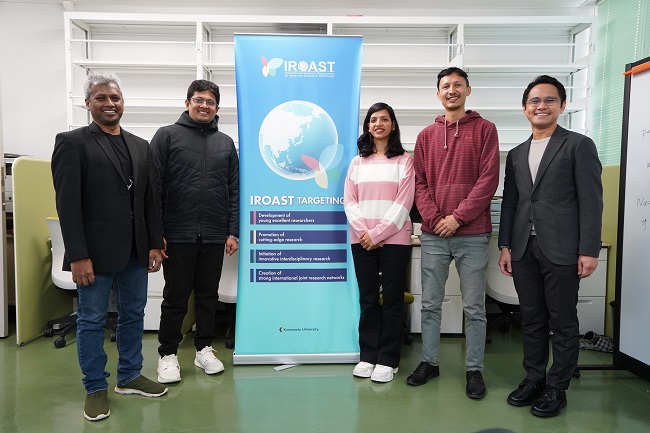


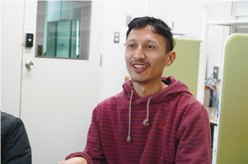
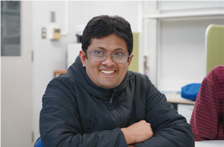
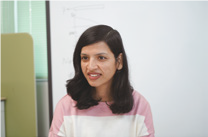
|
Jonas Karl Christopher Nuevas AGUTAYA (Philippines) |
Nobleson KUNJAPPY (India) |
Prafulla Bahadur MALLA (Nepal) |
Mohammad Atiqur RAHMAN (Bangladesh) |
Reetu Rani (India) |
Not hesitating, I grabbed the opportunity for an IROAST position!
―How did you decide to join IROAST?
Kunjappy:I am a member of research group on detecting gravitational waves from pulsar observations in India, and I collaborated with Professor Keitaro Takahashi, who is also an IROAST  International Joint Research Faculty Member, and we co-authored a paper. That was how I came to know about IROAST. Professor Takahashi invited me to join IROAST, and I decided without hesitation.
International Joint Research Faculty Member, and we co-authored a paper. That was how I came to know about IROAST. Professor Takahashi invited me to join IROAST, and I decided without hesitation.
Malla:When I got the chance to do research at IROAST, I didn’t hesitate to make the decision. After obtaining my Ph.D., I was working in a bridge division on an expressway project in Nepal, but I decided to take a break from that for a while and came to Kumamoto.
Reetu Rani:I had completed my Ph.D. in India. I was looking for some postdoctoral opportunities, particularly in Japan, a country renowned for its scientific excellence and numerous Nobel laureates. During my search, I came to know about IROAST. The opportunity to advance my career while experiencing Japanese culture was exactly what I was hoping for.
Agutaya:I am a little different from you because I received my Ph.D. from Kumamoto University. I applied for the IROAST International Postdoctoral Fellowship Program* to be able to continue my current research. Also, as the goal of the program is to nurture researchers like us to become the next generation of leaders, I believed that it was the ideal avenue for career advancement here in my alma mater.
Rahman:IROAST is one of the most renowned institutes in promoting international collaborative research and interdisciplinary research with world-renowned universities and research institutions around the world. IROAST offers an environment in which we can engage in research that contributes to the achievement of the SDGs, and as one of the young researchers, I would like to contribute to IROAST’s achievements.
Full funding and support for young researcher to fully engage in research
―What kind of research institute do you think IROAST is?
Rahman:There is an environment and full support for young researchers to conduct research efficiently and effectively. With experienced researchers gathered on the same platform, not only can they gain a variety of knowledge and experience, but it is also possible for young researchers to pursue joint research with internationally recognized researchers. IROAST is one of the best platforms for young researchers who will be leading the research in future.
 Malla:The researchers at IROAST come from different backgrounds, so working with them also allows me to enrich the academic experience by their diverse perspectives and ideas.
Malla:The researchers at IROAST come from different backgrounds, so working with them also allows me to enrich the academic experience by their diverse perspectives and ideas.
Agutaya:With the various funding programs of IROAST, I have been able to pursue collaborative research with professors and researchers not only in Japan but also overseas. For example, I was also able to participate in the “Chemical Sensor Block Course” organized by Dr. Nicolae Barsan (IROAST Visiting Professor) of the University of Tubingen, Germany, through the IROAST International Joint Research Travel Support Program.
Reetu Rani:I also utilized IROAST travel support to attend an international conference on coordination chemistry held in Thailand. I am grateful to be a part of IROAST where I have access to invaluable resources essential for my research. I particularly appreciate the financial support by IROAST. One more thing I would like to mention, and I am also very thankful to the administrative staff at IROAST. They kindly and tirelessly assist researchers, including myself, who hardly know any Japanese, in dealing with our concerns and things we do not understand. In addition, Kumamoto University has various programs to support female researchers. Actually, at first I was a little disappointed because of very few female researchers in my department. But I never feel discriminated at all because of my age or gender. I would strongly recommend IROAST to female researchers who dream of conducting research in Japan.
Kunjappy:IROAST is one of the top research institutes in Japan. Being a member of IROAST has not only broadens my academic horizons, but also foster meaningful connections within the scientific community. There are diverse perspectives and innovative approaches to scientific research in Japan, and I am confident that this will deepen my research.
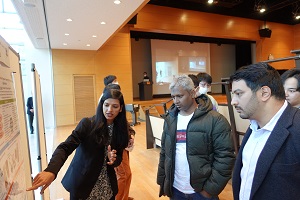
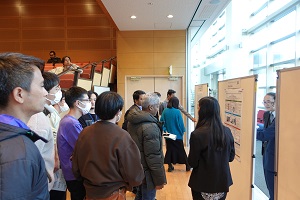
Presented research at the IROAST symposium Poster presentation at the symposium
Rich nature and convenient urban life,
Kumamoto has both.
―What do you think of Kumamoto? What do you do on your days off?
Agutaya:Kumamoto is an urban area surrounded by nature. A few kilometers away from the city center are Mt. Kinpo and Lake Ezu; and the Suizenji Koen with its peaceful Japanese garden, is just around the corner. I go hiking at Mt. Kinpo several times a year. Reaching the summit can give me a sense of accomplishment and help me forget about my daily stress. Then on my way down, I always look forward to eating yakiniku (grilled meat) or shabu-shabu (Japanese hot pot) as my reward.
Malla:Lake Ezu is also nice. Enjoying the serene ambience, it is a perfect place to spend time and revel in the natural surroundings. The Shirakawa River flows near the Kurokami campus, 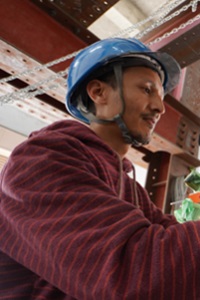 where ROAST is located, and I take a leisurely stroll along its banks.
where ROAST is located, and I take a leisurely stroll along its banks.
Kunjappy:I like the banks of the Shirakawa River, too. I especially like to take a slow walk, especially during the enchanting hours of sunset. As I meander along, I enjoy the picturesque vistas that unfold before me. On the other hand, the downtown shopping area is bustling and I like to feel the vibrant energy of urban life.
Reetu Rani:The best thing about Kumamoto is that the city offers both the tranquility and serenity of nature alongside the convenience and comfort of modern infrastructure for daily life. I like almost all aspects of Kumamoto city from being calm and peaceful, vibrant festival seasons, pleasant weather, and last but not least, its lovely and helpful people.
Kunjappy:Because the people in Kumamoto has the genuine warmth and hospitality, visitors from the outside like us can also feel comfortable.
Agutaya:Actually, my most favorite place in Kumamoto is my jogging route along the Shirakawa River where I frequently encounter my favorite thing: the "egao (smiles) of the people of Kumamoto”. To be greeted “ohayo gozaimasu” (good morning) with a smiling face is the best way to start my day.
Rahman:One of the best places in Kumamoto is Aso. The views near the crater in Mt. Aso were amazing, and looking into the emerald lake of one of the world’s most active volcanoes is pretty special. Mt. Aso is a well place worth visiting.
Malla:On weekends, I love exploring new places. My wife and I sometimes wander through the city, and we can easily travel by bus or train, so we can discover beautiful urban and village areas as well as understanding the local culture.
Rahman:It's a wonderful time to spend with family and friends. During the holidays, I explore new places and cultures, learn new things, and try to make connections with peoples of different nationalities.
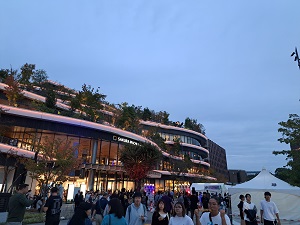
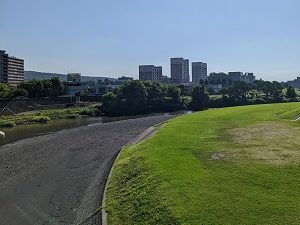
Kumamoto City Area Shirakawa River and Kumamoto University
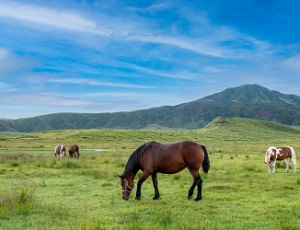
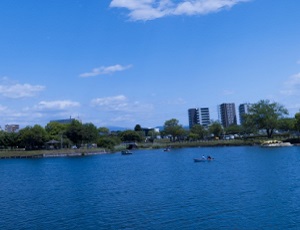
Aso Lake Esu
Utilizing my experience at IROAST
I want to contribute to the development of science
―What are your future prospects?
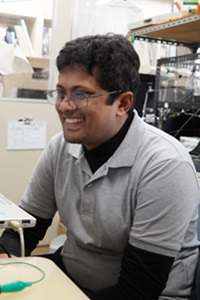 Rahman:Energy is fundamental to drive the basic human needs, yet current energy technologies still face many challenges. As a materials scientist, my goal is to explore novel 2D and 3D materials that be used in energy technology and that can compete with existing materials both in performance and durability.
Rahman:Energy is fundamental to drive the basic human needs, yet current energy technologies still face many challenges. As a materials scientist, my goal is to explore novel 2D and 3D materials that be used in energy technology and that can compete with existing materials both in performance and durability.
Reetu Rani:I am currently working on the environmental application of metal organic frameworks (MOFs), and I want to continue this research in the future. Additionally, by leveraging my postdoc experience, I aspire to assume a senior role in academia or research institutions to keep pushing the boundaries of my research. My overarching goal is to continue making impactful contributions to my field while advancing my career and professional development.
Kunjappy:I aim to pursue interdisciplinary approaches that foster innovation and collaboration. By integrating diverse methodologies and perspectives, I aspire to  address complex scientific challenges and contribute meaningfully to the advancement of knowledge.
address complex scientific challenges and contribute meaningfully to the advancement of knowledge.
Agutaya:My immediate goal is to continue my research in the Kida lab, and I am currently considering applying for another scholarship like the one offered by the Japan Society for the Promotion of Science (JSPS).
Malla:My IROAST postdoctoral position is approaching to its conclusion in August 2024. Recently, I was awarded a JSPS Grant-in-Aid for Young Scientists (Start-up), which will provide me with research funding for the next two years to conduct experimental research. With this opportunity in hand, I am wholeheartedly committed to continuing my research journey in Kumamoto University. IROAST is a very good environment for young researchers. I hope that many researchers will come to Kumamoto University.
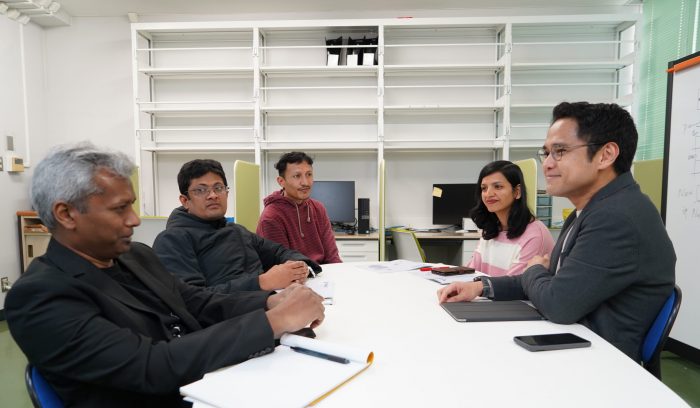
*IROAST International Postdoctoral Fellowship Program
IROAST aims to create an international research hub where outstanding researchers from around the world gather. As part of this effort, IROAST invites talented young researchers from abroad to conduct creative research and provides them with research (For the applications)

